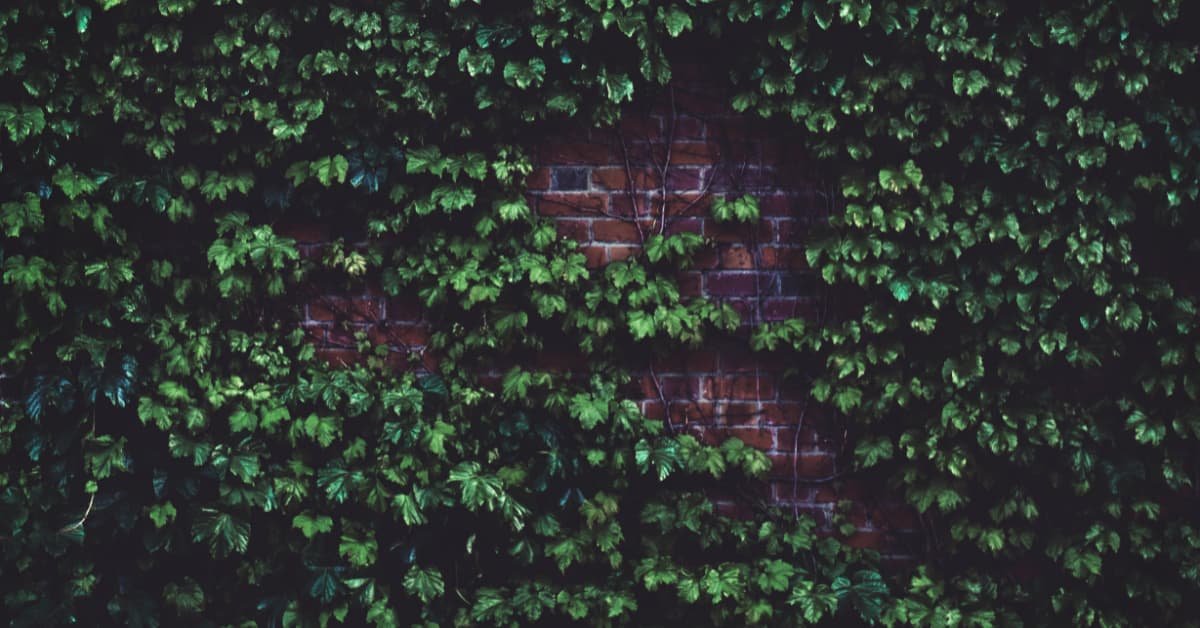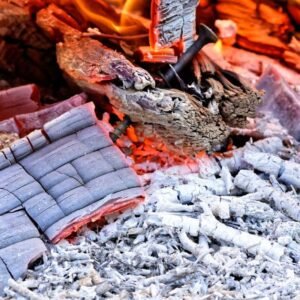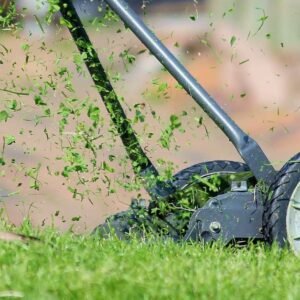
Invasive ivy can cause numerous problems in your yard, from covering the ground and climbing trees to growing on buildings and causing structural damage. While chemical solutions are readily available, some may prefer to opt for natural methods of ivy removal.
Natural ivy removal techniques utilize common household items such as vinegar, salt, and soap, and can help you successfully get rid of ivy without the use of harmful chemicals. This article will provide an overview of the different types of ivy, the properties of ivy plants, and the challenges associated with removing ivy without chemicals.
Additionally, it will outline various methods for removing ivy, including those for creeping ground ivy and climbing ivy on trees and walls. By following the tips and techniques discussed in this article, you can regain control of your yard and keep it free of invasive ivy.
Short Summary
- Ivy is an invasive plant that can take over anything in your yard if left unchecked.
- White vinegar, salt, soap, and boiling water can be used to get rid of ivy without chemicals.
- The key to getting rid of ivy is to attempt to remove it all at once and be persistent during the removal process.
- To kill climbing ivy on trees, cut all of the vines down to waist level and take out as many of the ivy roots by hand as you can from the trunk.
Types of Ivy
The PRE-EXISTING KNOWLEDGE provides an understanding of the characteristics of ivy, including its invasive nature, climbing abilities, and the different methods of removing it without chemicals, which can be useful in identifying and distinguishing the various TYPES OF IVY.
There are around 20 different species of ivy, all of which can be classified into two main types: ground creepers and climbers. Ground creepers, as the name suggests, grow along the ground and can rarely go any higher than six inches. Climbers, on the other hand, can climb up to heights of almost 100 feet when they have a solid base.
While both types of ivy can be invasive and difficult to control, climbers are usually more challenging to remove due to their ability to climb and attach themselves to nearby structures such as trees, walls, and buildings.
While chemicals can be an effective way of removing ivy, they also come with their own set of drawbacks, such as potential harm to the environment and other plants. Therefore, it is essential to consider the benefits and drawbacks of using chemicals for ivy removal and explore natural methods that can be equally effective.
Properties of Ivy
One characteristic of ivy is that it can climb up to almost 100 feet in height when it has a solid base. This attribute makes it an excellent choice for landscaping as it can add a natural, aesthetic appeal to any garden or outdoor space. Ivy can also provide additional benefits such as serving as a habitat for wildlife, reducing soil erosion, and acting as a natural air purifier.
However, despite its positive attributes, ivy can also have harmful effects on buildings. When ivy climbs up walls, it can cause damage to the structure by loosening mortar and causing cracks. The plant’s roots can also penetrate the surface of the wall, making it difficult to remove the ivy without causing further damage. Additionally, ivy can attract insects and rodents, which can further damage the building’s structure.
As such, it is essential to keep ivy under control and remove it when necessary to prevent any potential harm to buildings.
Challenges of Ivy Removal
Challenges arise when attempting to eradicate ivy due to its invasive and resilient nature, which can cause it to quickly regrow if not removed entirely. Additionally, removing ivy without the use of chemicals requires a significant amount of time and effort. To effectively remove ivy, one must have the necessary tools and knowledge to do so.
Tools needed for natural ivy removal include pruning shears, gloves, a garden sprayer or spray bottle, white vinegar, salt, soap, and boiling water. While these tools can be effective in removing ivy, it is important to consider the environmental impact of their use. For example, using boiling water to kill ivy roots can also kill surrounding vegetation and harm soil quality. Therefore, it is important to carefully weigh the benefits and drawbacks of each method and choose the most environmentally friendly option.
Methods for Ground Ivy
Effective methods for eradicating ground ivy require the use of tools such as pruning shears, gloves, and white vinegar. Ground ivy, also known as creeping Charlie, is a common lawn weed that can quickly spread and take over large areas. While it has some benefits, such as providing erosion control and attracting pollinators, ground ivy can also have a negative impact on local ecosystems by displacing native plant species and altering soil composition.
To remove ground ivy, it is important to first identify the affected area and mark off any desirable plants that should not be removed. Then, using pruning shears or a lawn mower, cut the ivy as low as possible to the ground. After cutting, saturate the area with a mixture of white vinegar and water, which will help to kill the remaining roots.
However, it is important to note that this method may also harm other nearby plants, so it should be used carefully and selectively. Alternatively, some gardeners choose to manage ground ivy rather than removing it completely, by regularly mowing and trimming the plant to keep it under control.
Methods for Climbing Ivy on Trees and Walls
A crucial step in eradicating climbing ivy on trees and walls is to identify and mark off any other desirable vegetation that should be preserved during the removal process, as the ivy can quickly spread and take over large areas with its invasive nature.
DIY tools such as a pruning saw or loppers can be used to cut the vines down to waist level. Once the ivy has dried out and died off, the vines can be pulled out by hand, and any remaining roots can be dug out with a garden spade or fork.
Safety precautions should be taken when removing ivy from trees, as falling branches or vines can be hazardous. It is best to have a partner to help with the removal process and to wear protective gear such as gloves and eye protection.
If vinegar and salt are not desirable options for removing ivy, there are alternatives such as glyphosate-based herbicides. However, these chemicals should be used with caution and according to the manufacturer’s instructions, as they can be harmful to other vegetation and wildlife. It is also important to properly dispose of any dead ivy and herbicide containers.
Overall, persistence and diligence in the removal process are key to successfully getting rid of climbing ivy on trees and walls without the use of chemicals.
FAQs
Can using vinegar to remove ivy harm other plants in my yard?
The use of vinegar to remove ivy may harm other plants in the yard due to its acidic nature. Vinegar alternatives, such as salt and soap, may be less harmful. Vinegar may also impact soil pH and nutrient levels.
What is the best time of year to remove ivy?
The best time to remove ivy is during the dormant season, which is typically in late fall or winter. Pruning techniques involve cutting the vines at the base and carefully removing them, being mindful of any damage to surrounding plants or structures.
How do I prevent ivy from coming back after I’ve removed it?
Preventing the regrowth of ivy after removal requires post-removal maintenance. This includes regularly checking the area for any new growth and promptly removing any sprouts. Covering the area with a physical barrier or planting other vegetation can also prevent ivy from returning.
Are there any tools or equipment that can make the ivy removal process easier?
Pruning shears and gloves are essential tools for removing ivy, as they help to cut and pull out the vines. Proper disposal of ivy is crucial, and it can be disposed of in the trash or garden bin.
What are some common mistakes to avoid when removing ivy without chemicals?
Removing ivy without chemicals requires avoiding common mistakes and utilizing effective techniques. Mistakes to avoid include incomplete removal and not being persistent. Effective techniques include properly saturating the ivy with vinegar and removing all base roots.



